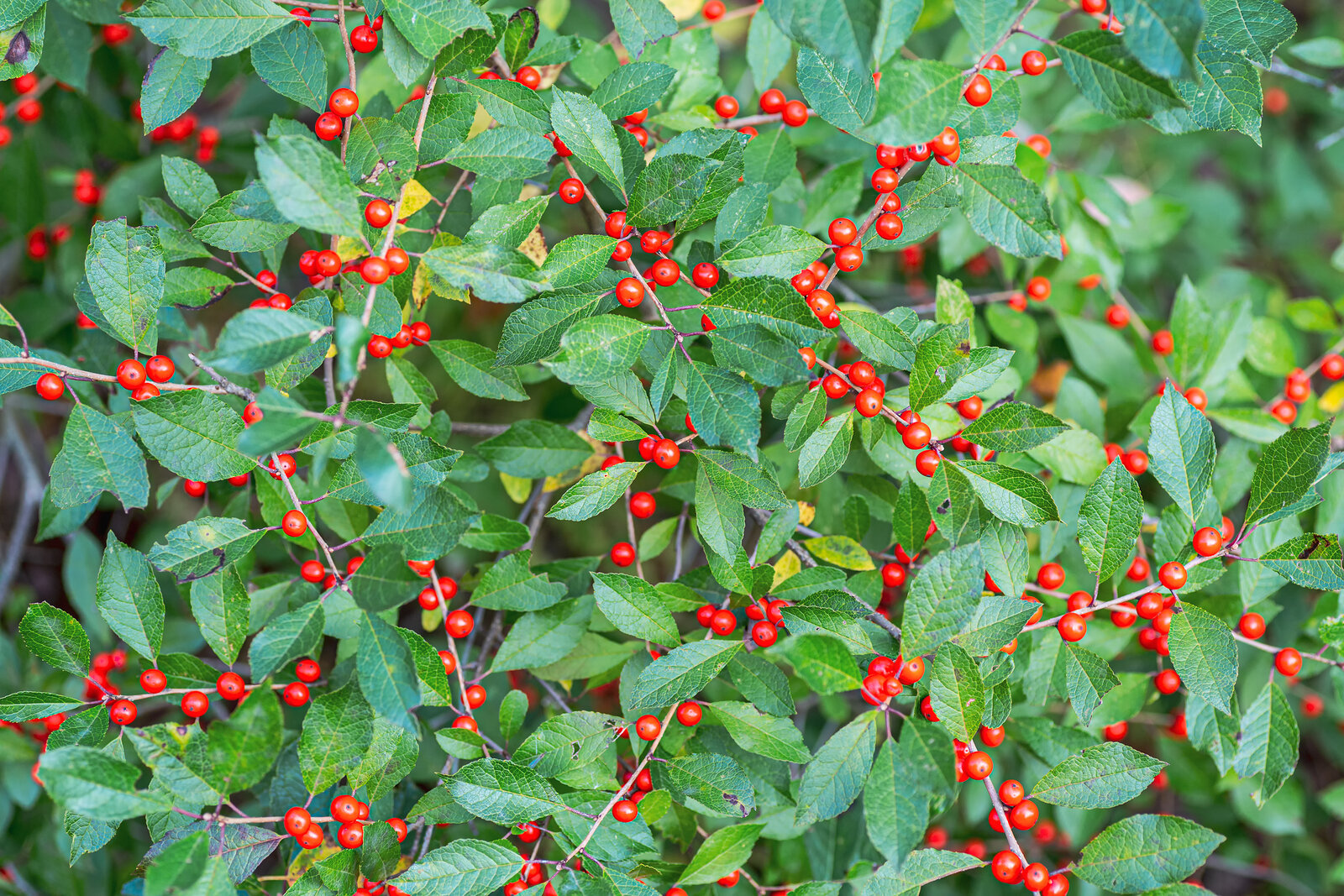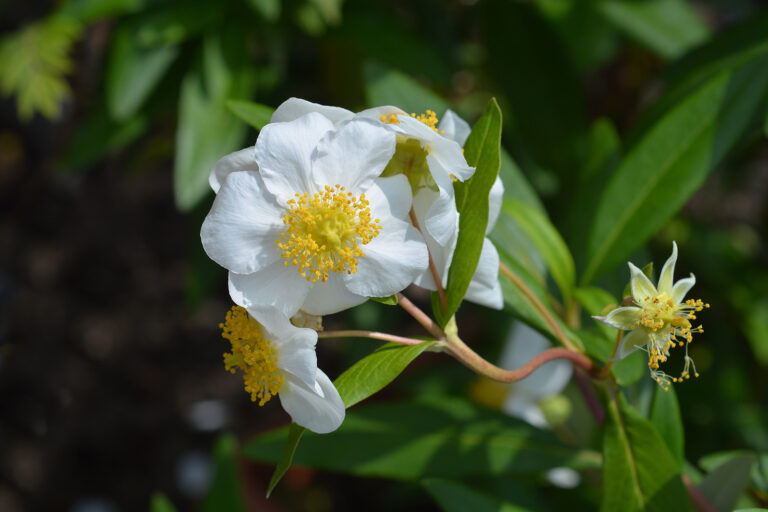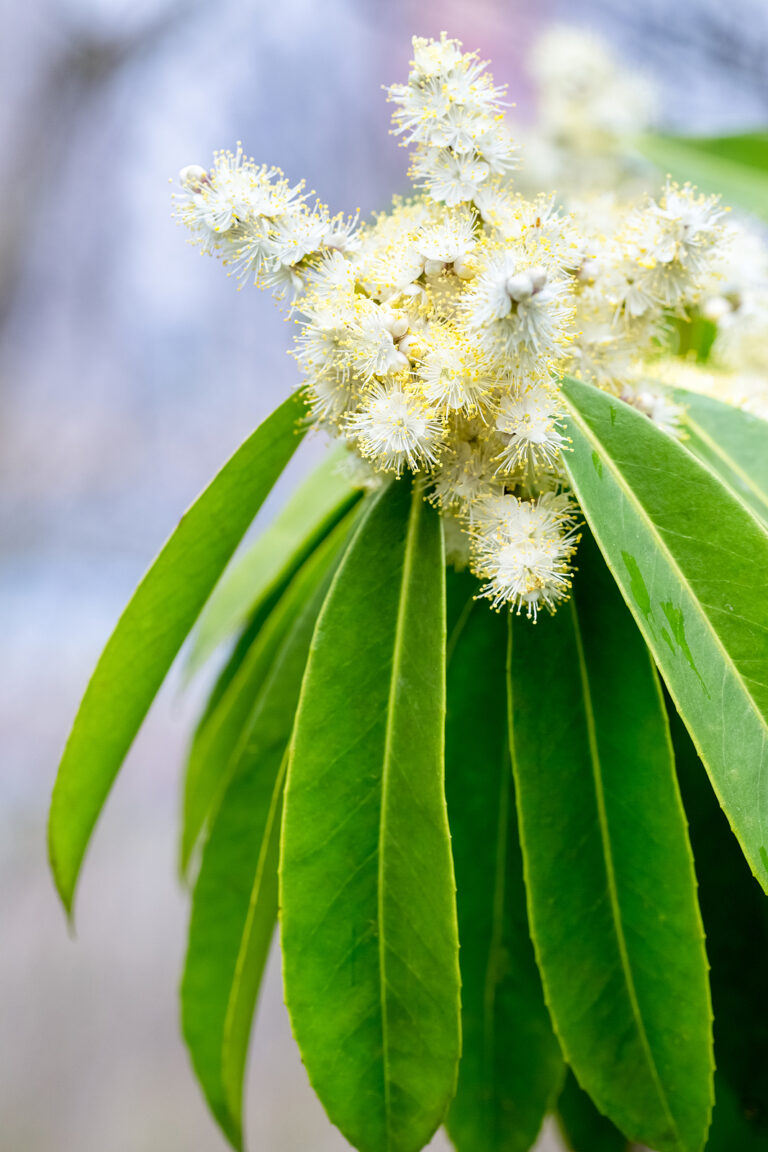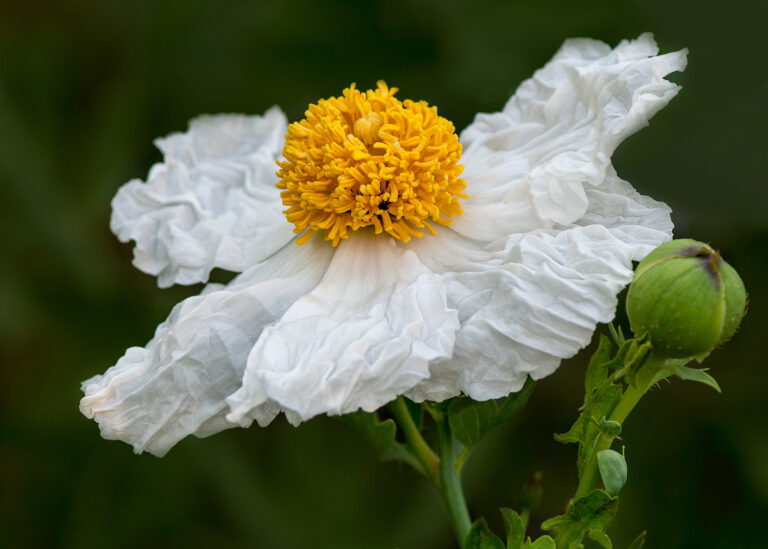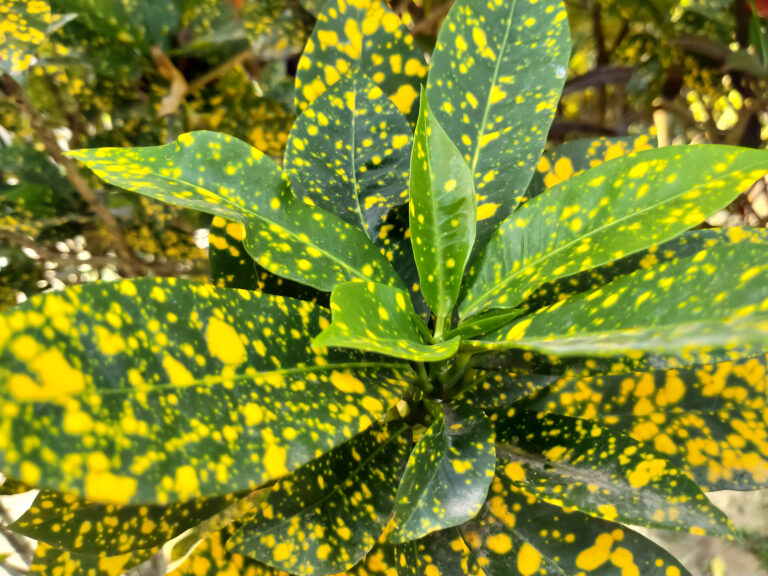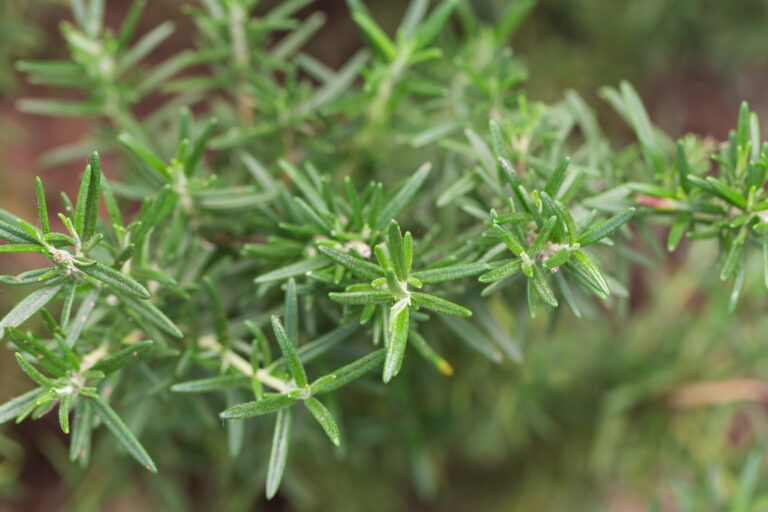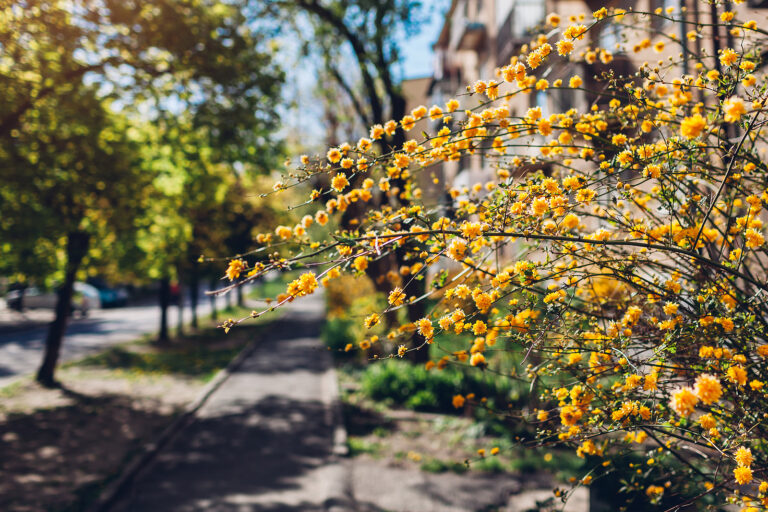How to Grow Ilex – Holly
The genus Ilex–commonly called hollies– includes mostly evergreen shrubs and trees. They are glossy leaved trees and shrubs notable for their brilliantly colored berries.
Ilex are of great ornamental value in the gardens as small specimen trees, hedges, and in the shrubby border.
Ilex deep-green leaves are commonly spine-toothed and spiny. Sometimes leaves can be variegated. Flowers appear singly or in clusters of 3 to 8 petals, usually white or cream. Berries follow flowers in autumn; berries can be red, black, orange, or yellow.
Hollies can be used in hedges or windbreaks and as specimen trees. Wherever they can be grown the different species are highly ornamental for garden and lawn specimens besides having an inseparable association with the Christmas holidays.
All Ilex prefer humus-rich, rather moist soil. They are slow-growing.
Ilex is a genus of more than 400 species of evergreen and deciduous trees, shrubs, and climbers from woodlands in tropical, subtropical, and temperate regions around the world.
Get to Know Ilex
- Plant type: Evergreen winter-interest shrub
- Growing Zones and range: Zones 4-9
- Hardiness: Berries turn black when temperatures dip to 10°F/-12°C.
- Height and width: Size varies by variety; some hollies can grow to 60 feet tall
- Foliage: Deep-green leaves are commonly spine-toothed and spiny.
- Flowers: Inconspicuous white flowers
- Berries: Both a male and a female plant are necessary for berry production.
- Bloom time: Late spring to early summer
- Uses: Foundation plantings, hedges, screens; birds are attracted to Ilex berries.
- Common name: Holly, winterberry
- Botanical name: Ilex spp.
- Family: Aquifoliaceae
- Origin: Woodland in tropical, subtropical, and temperatre regions worldwide
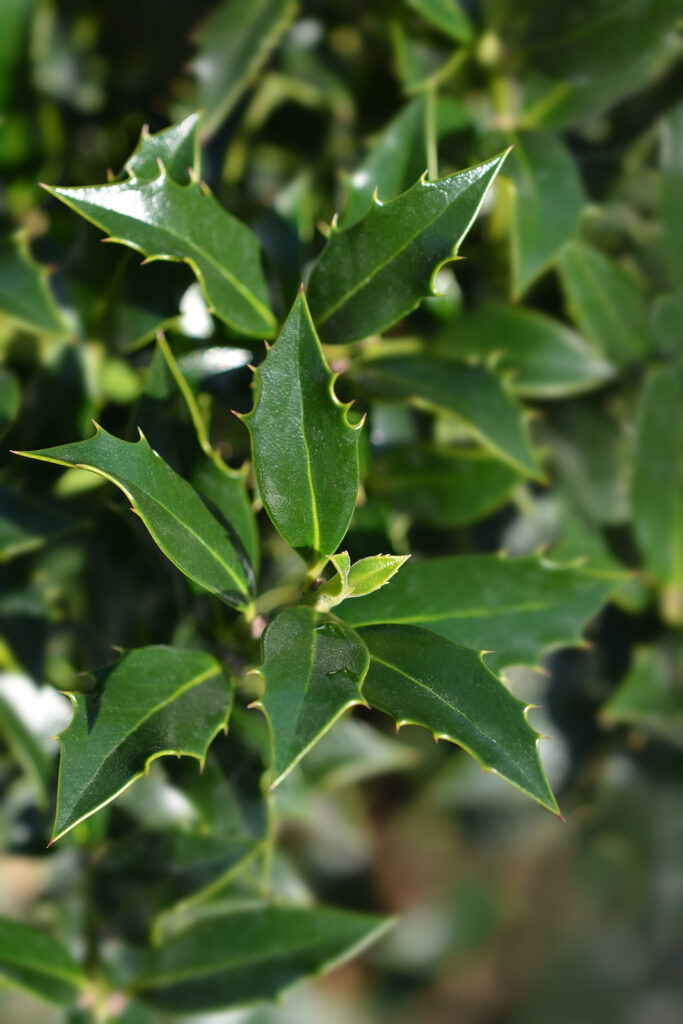
Where to Ilex
- Plant Ilex in full sun for the most berries. Holly will grow in light shade.
- Grow Ilex in deep, humus-rich to heavy, wet to swampy, acid soil.
- When to Plant Ilex
- Plant Ilex in spring or fall.
- Transplant container-grown Ilex or balled-and-burlapped plants in spring or fall.
- Planting and Spacing Ilex
- Space Ilex 6 to 10 feet or more apart depending on the variety.
- If the soil is not acidic, add garden sulfur to the planting hole.
- Ilex are dioecious, which means that male and female flowers are borne on separate plants. Plant at least one male for every five females plants of the same species to get berries on the females.
- How to Water and Feed Ilex
- Ilex needs abundant water; keep the soil moist.
- Add acidifying fertilizer around Ilex each spring.
Ilex care
- Mulch around Ilex to conserve soil moisture.
- Prune Ilex in late spring only as necessary, removing dead or damaged wood.
- Prune free-standing specimens to shape in early years only; clip formally grown plants in summer; trim hedges in spring.
- Do not shear Ilex; shearing could interfere with berry production.
- Ilex Pests and Diseases
- Young shoots are susceptible aphids; scale insects and leafminers may be problems on evergreen species. Leafminers can burrow inside Ilex leaves; remove and destroy affected leaves.
- Scale can attack Ilex; spray with horticultural oil.
- Leaves may turn yellow due to lack of nitrogen; fertilize regularly.
- Sometimes suffer from Phytophthora root rot.
Ilex Propagation
- Layer Ilex in summer.
- Take cuttings of evergreen types anytime.
- Sow seed in containers in a cold frame in autumn. Remove seed from fleshy covering and sow in fall; seeds can take 18 months to germinate.
Ilex Varieties to Grow
- Ilex aquifolium, English holly, usually erect, dense, pyramidal or oblong, evergreen shrub or tree with gray bark. Bears elliptic or ovate, glossy, dark green leaves, 2-4 inches (5-10cm) long, with entire, wavy, spine-toothed, or spiny margins, and long-lasting, red or rarely yellow or orange berries, .13-.25 inch (4-6mm) across. To 80 feet (25m) tall and 25 feet (8m) wide. West and South Europe, North America, West Asia. ‘Balkans’ is very hardy and has glossy green leaves; ‘Gold Coast’ has dark green leaves with golden yellow margins.
- I. x attenuata, Topel holly, conical, evergreen shrub with obovate-lance-shaped, light green leaves, 1.25-3 inches (3-8cm) long, spine-toothed near the tips. Produces dark red berries, .25 inch (6mm) across. To 12 feet (4m) tall and 6 feet (2m) wide. Natural hybrid from South United States.
- I. cassina, Dahoon holly, rounded, pyramidal, densely branched, evergreen tree with oblong-lance-shaped, narrow, shiny, entire, mid-green leaves, to 2 inches (5cm) long. Bears abundant red to orange-yellow berries, .25 inch (6mm) across. Adaptable to wet conditions. To 20-30 feet (6-10m) tall and 8-15 feet (2.5-5m) wide. Southeast United States.
- I. cornuta, Chinese holly, dense, rounded, evergreen shrub with rectangular, glossy, dark green leaves, 2-3 inches (5-8cm) long, usually with prominent spines. Bears long-lasting, large red berries, .5 inch (15mm) across. To 15 feet (5m) tall and wide. China, Korea. ‘Burfordii’ is heavy fruiting with glossy dark green leaves that are spineless.
- I. crenata, Japanese holly, evergreen, very variable shrub or small tree, usually with ovate to elliptic, minutely scalloped, glossy, dark green leaves, .75-1.25 inch (2-3cm) long, often pitted beneath. Produces glossy black, sometimes white or yellow fruit, .25 inch (6mm) across. To 15 feet (5m) tall and 12 feet (4m) wide. Russia (Sakhalin), Japan, Korea. ‘Convexa’ has a dense, vase-shaped form; ‘Helleri’ has a compact globose form.
- . pedunculousa, Longstalk holly, upright, evergreen tree or shrub with elliptic to ovate, spineless, glossy, dark green leaves, 1.5-3 inches (4-8cm) long, bronze-tinted when young. Bears bright red fruit, .4 inch (9mm) across. To 20-30 feet (6-10m) tall and 22 feet (7m) wide. Canary Islands (Gomera, Tenerife), Azores.
- I. serrata, Japanese winterberry, deciduous, bushy shrub with slender, purple twigs and elliptic, finely toothed, dull green leaves, 1.5-3 inches (4-8cm) long, downy on both surfaces. Bears white flowers, followed by bright red, sometimes yellow or white fruit, .13-.25 inch (3-6mm) across. To 15 feet (5m) tall and 10 feet (3m) wide. China (Sichuan), Japan.
- I. verticillata, Black alder, Winterberry, suckering shrub or, sometimes, a small tree. Leaves are obovate or lance-shaped, toothed, bright green, 1.25-4 inches (4-10cm) long, with long, sharp-pointed tips, softly hairy beneath. In midspring, produces white flowers, followed by stalkless, spherical, dark red to scarlet, sometimes orange or yellow fruit, .13-.25 inch (3-6mm) across. To 15 feet (5m) tall and wide. Eastern North America. ‘Christmas Cheer’ is a heavy producer of red fruit; ‘Nana’, also called ‘Red Sprite’ grows to 5 feet tall; ‘Winter Red’ grows up to 10 feet tall.
- I. vomitoria, Yaupon holly, upright, irregularly branched, evergreen shrub or small tree with gray branches, white to gray bark, and narrowly oval to ovate, shallowly toothed, lustrous, dark green leaves, .5-1.5 inch (1.5-4cm) long, tapering at the bases. Bears abundant, persistent, translucent, scarlet-red fruit, .25 inch (6mm) across. Useful as a screen or hedge in swampy areas. To 15-20 feet (5-6m) tall and 10-15 feet (3-5m) wide. Southeast Virginia to Texas and Florida.
- I. decidua, Possumhaw, upright, deciduous shrub, late to come into leaf in spring. Oval or narrowly obovate, scalloped, bright green leaves, 1-1.5 inch (2.5-4cm) long, are crowded on short lateral spurs. Bears red or orange, occasionally yellow fruit, .1.3-.4 inch (4-9mm) across. To 6-20 feet (2-6m) tall and wide. Central and Southeast United States.
- I. dipyrena, Himalayan holly, dense, upright, evergreen tree bearing oblong or elliptic, evergreen tree bearing oblong or elliptic, leathery, dull green leaves, 2-4.5 inch (5-11cm) long, with abundant spines when young, fewer when mature. Bears red fruit, .25-.4 inch (6-9mm) across. To 50 feet (15m) tall and 40 feet (12m) wide. Eastern Himalayas, Western China.
- I. glabra, Gallberry, Inkberry, erect, evergreen shrub with narrowly obovate to inversely lance-shaped, glossy, dark green leaves, .25-2 inches (2-5cm) long, pitted beneath. Bears black, occasionally white fruit, .13-.4 inch (3-9mm) across. To 10 feet (3m) tall and wide. East North America.
- I. opaca, American holly, erect, evergreen, large shrub or tree with oblong-elliptic, spine-toothed or entire, leathery, matte, dark green leaves, 2-4 inches (5-10cm) long. Bears crimson, or occasionally yellow or orange fruit, .25 inch (6mm) across. To 40-50 feet (12-15m) tall and 20-40 feet (6-12m) wide. Central and Eastern United States. ‘Merry Christmas’ has dark leaves and bright red berries.

